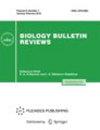[“隔离机制的发展”(以及以“强化”形式出现的特殊情况)有什么问题?]
摘要
考察的是“强化”模型的概念基础,它在进化论的解释方案中起着重要作用。根据目前的观点,强化(在自然选择下,当两种本质上不同的形式之间发生重复的杂交接触,直到开始的杂交终止,形式变得无法杂交)应该是一种常见甚至频繁的现象。实际上,强化变成了一个需要专门搜索的罕见事件,所有这些事件都是可疑的,等等。在这里,主要使用鸟类学(和其他一些动物学)材料,分析了加固的实证数据。结果表明,在大多数情况下,理论预测会发生强化,但实际上并没有发生。相反,我们观察到一些完全相反的东西——非杂交增强的选择并没有阻止由于在重复接触区域内杂交而导致的形式基因库中的泄漏,而是建立了稳定的杂交区域,作为形式之间基因交换的管道。通过杂交,这些形式可以采用奇怪的基因,保持它们在不同物种水平上的隔离。这是通过在两种形式的人口系统中相互接触的自我-非自我认识系统来实现的。在重复接触区域内,个体经常会出现形成混合对并产生杂交的错误,即在个体层面上,自我-非自我识别往往是低效的,特别是在范围边缘、重复接触区域等。即使在持续杂交的条件下,确保物种分离的有效识别,发生在不同来源的个体——表型上的“纯”个体、杂交个体和回交个体——被纳入两种形式的空间-行为学种群结构中,发生在已建立的群体获得领土时,发生在种群群中,发生在其他常驻个体的种群内联系中。在这种情况下,这两种形式的群体主要融合了它们“自己的”(“纯粹的”)表型,并拒绝了“奇怪的”表型,包括中间表型的杂交。如果这些形式已经达到了物种分离的水平,那么杂交种就不会形成自己的稳定群体,而是试图单独地将自己插入双亲的栖息地,这与特定形式的表型“纯”个体相比,结果并不那么成功。因此,杂种碰巧被直接排除在这两种形式的种群系统之外,即使杂交继续进行并产生了足够数量的杂种,而杂种和回交本身在存活率或繁殖成功率方面并不低于“纯”个体(那些成为居民的个体占据了一块领土并正在繁殖)。结果表明,通常的强化例子不仅稀疏,而且可以用不同的方式解释。特别是,一个种群系统的“分裂”产生了两种不同形式的生态,随后通过性选择加强/增强了差异,我们的自我-非自我认识模型比强化模型更好地解释了这一点。根据这一概念,得出的结论是,数据不支持重复接触杂交区域的非杂交“强化”模型,以及由此得出的性状位移模型。显然,它受欢迎背后的原因与大多数研究者所认同的一种更普遍的理论的“意识形态”相一致,并且总体上符合已知的事实(在这种情况下,是现代进化综合理论)。Examined are the conceptual grounds of the "reinforcement" model that play an important role in explanatory schemes of the theory of evolution. According to the current views, reinforcement (of obstacles for crossing under natural selection when there occurs a repeated contact with hybridization between two substantially divergent forms, up to the level where started hybridization is terminated and the forms become unable to cross) should be a common or even frequent phenomenon. In fact, reinforcement turns out to be a rare event needed to be specially searched for, all such events are dubious, etc. Here, empirical data on reinforcement pro and contra are analyzed, using mostly ornithological (and some other zoological) materials. It is shown that in most cases where the theory predicts reinforcement to occur, it does not happen. On the contrary, something quite opposite is observed--selection for non-crossing enhancement does not stop up the leaks in gene pools of the forms that are due to their hybridization within the zone of a repeated contact, but instead the stable hybrid zone is established which serve as a conduit for gene exchange between the forms. Through hybridization, those forms can adopt strange genes, remaining, at that, their isolation at the level of separate species. This is achieved through the system of self-non-self recognition in population system of both forms being in contact. Within the zone of a repeated contact, conditions are usually such that individuals repeatedly make mistakes forming mixed pairs and producing hybrids, i.e., at the level of individuals, self-non-self recognition is often inefficient, especially at the range edges, in zone of repeated contact and such. Efficient recognition, that ensures species separateness even under conditions of continuing hybridization, takes place upon inclusion of individuals of different origin--phenotypically 'pure' ones, hybrids, and backcrosses--into spatio-ethologic population structure of both forms, upon acquisition of territories by established groups, their inclusion in flocks and other intra-population associations of resident individuals. At that, groups of both forms predominantly incorporate their 'own' ('pure') phenotypes and reject 'strange' ones, including hybrids of intermediate phenotype. If the forms have attained the species level of separateness, hybrids do not form their own stable groups, but try to individually inset themselves into the habitation of both parents, which turns out to be not so successful as compared with phenotypically 'pure' individuals of the given form. Thereby, hybrids happen to be directly excluded from the population system of both forms even if hybridization goes on and produces them in sufficient quantity while hybrids and backcrosses themselves are not inferior to 'pure' individuals either in survivorship or reproductive success (those ones who became residents have occupied a territory and are reproducing). It is shown that usual examples of reinforcement are not only sparse but could be explained differently. Particularly, 'splitting up' of a population system which gives rise to two forms of different ecology with following strengthening/enhancement of the divergence through sexual selection is better explained by our model of self-non-self recognition than by reinforcement. Relying on this concept, the conclusion is drawn that the model of non-crossing 'reinforcement' in zones of a repeated contact with hybridization is not supported by the data, as well as the model of character displacement that follows from it. Apparently, the reasons behind its popularity consist in conformity with the 'ideology' of a more general theory that is agreed upon by most researchers, and corresponds, in whole, to known facts (in this case, the theory of modern evolutionary synthesis).

 求助内容:
求助内容: 应助结果提醒方式:
应助结果提醒方式:


